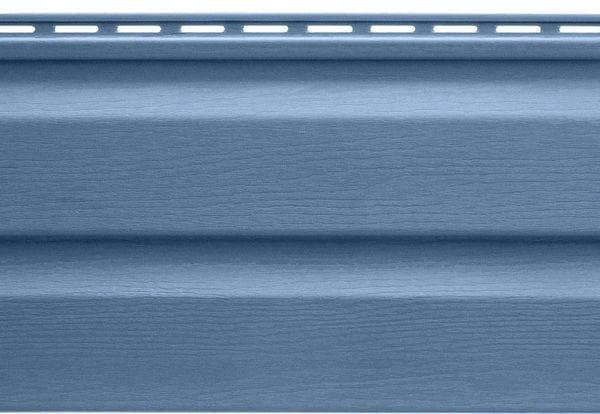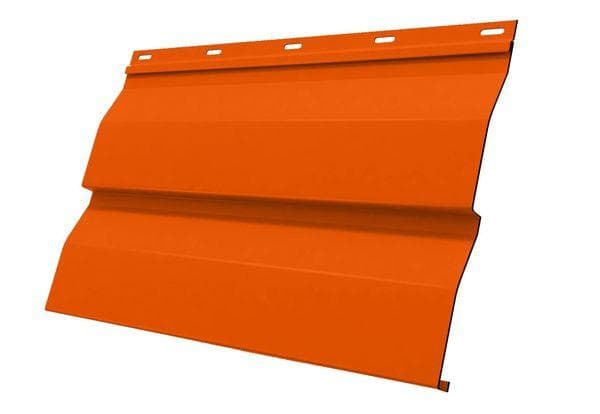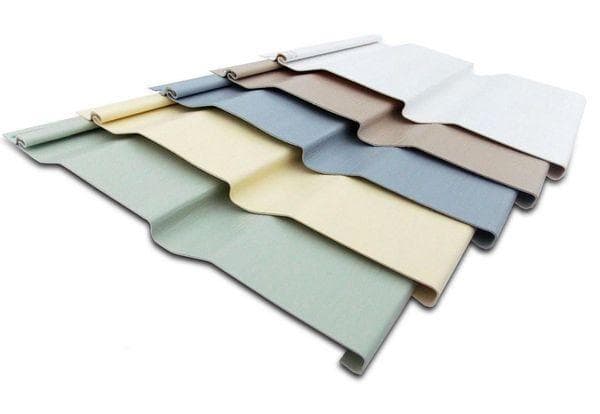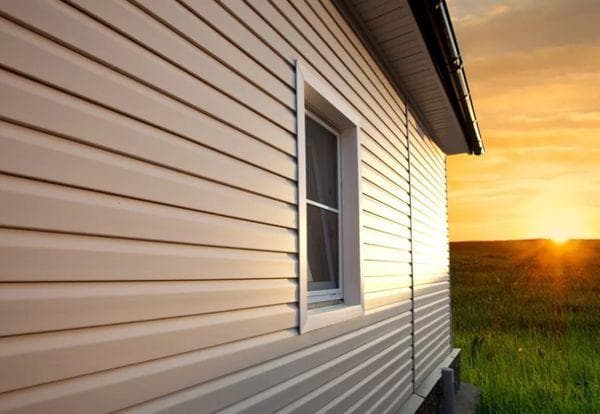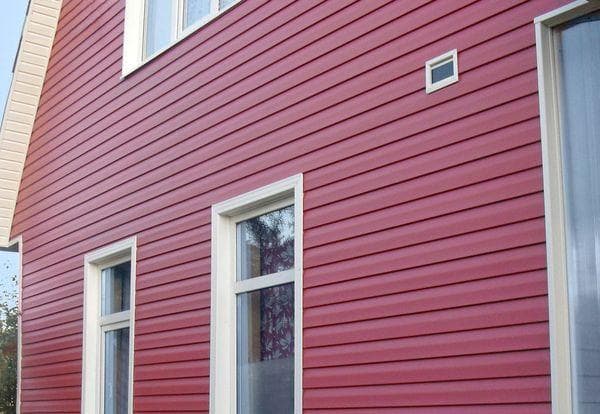Plastic VS metal facade: which siding is better, vinyl, metal or acrylic?
Content:
Different types of siding have practically replaced the dirty fuss with plaster from construction sites. This is a modern and relatively inexpensive material for wall cladding. The first question that usually arises among buyers is which siding is better, acrylic, metal or vinyl. Without going into details, metal is a more solid option. But it is not suitable for all cases.
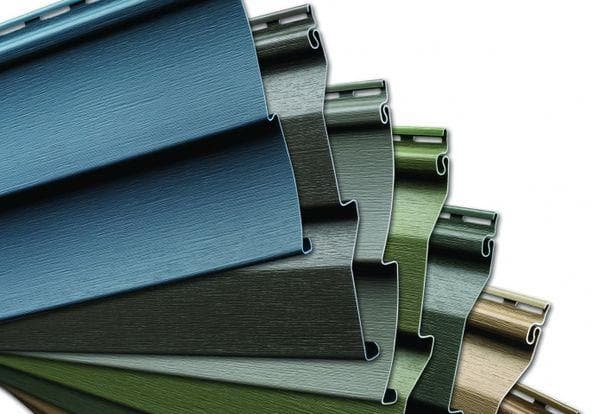
What is acrylic siding?
They began producing siding from acrylic relatively recently, in 2016. The pioneer was the Deke company. For its production, a new generation polymer is used - acrylic-styrene compound.
Acrylic siding is a durable and rigid material that is resistant to deformation, fading, and low temperatures. Its peculiarity is a wide palette of shades, including dark ones, and realistic imitations of wood and metal.
Acrylic panels are very popular, and despite their recent appearance on the market, they are represented quite widely.They are produced by Docke, Alta-profile, Grand Line, Tekos and others. Wood paneling and metal trim deserve special attention. The imitation is made so well that even close up it is difficult to understand that it is plastic.
What is metal siding?
The basis of metal siding is profile panels made of galvanized steel sheets. The thickness of the metal varies from 0.40 to 0.65 mm. The panels are given the required shape using the shafts of rolling equipment. Additional elements with a complex profile shape are produced by bending on bending machines. After this, the steel blanks are coated with a primer and polymers for protection and an attractive appearance.
Metal panels can be flat, shaped, perforated, rounded like a log, or have the texture of stone. They are fire resistant, durable, and retain their shape well in adverse conditions.
Metal siding consists of layers:
- zinc;
- anti-corrosion coating;
- primer;
- protective paint coating;
- polymer coating.
What is vinyl siding?
Today, vinyl siding is the most budget option. Its main component is polyvinyl chloride (PVC).
The most popular manufacturers of vinyl siding are Altaprofil, Decas, Decas. The material has been on the market since 1957. During this time, by adding various modifiers, stabilizers and additives, it was possible to significantly improve its quality.
Despite the external resemblance to plastic, the material is elastic, durable, and does not burn (smolder). Vinyl panels are available in different colors and can imitate wood and brick.
What is the difference?
All of the listed types of siding are often similar in appearance.They can have the same design: block house, shiplap, herringbone, etc. The difference between them lies in the raw materials used and performance characteristics. The following differences can be immediately identified:
- Acrylic panels are brighter and denser than vinyl.
- Metal siding is stiffer and does not bend like acrylic and vinyl.
- Metal panels are heavier than plastic ones.
Comparison of materials
Metal, vinyl and acrylic siding are equally in demand, but have their own characteristics. We invite you to compare them:
- Acrylic siding can be called a more advanced prototype of vinyl. It is less susceptible to deformation and retains its attractive appearance longer. Unlike vinyl panels, which specialists install not too tightly (to take the desired position after cooling or heating), acrylic siding can be installed with less clearance. It is tougher, does not soften from heat and does not shrink from frost. In addition, acrylic is UV resistant. The facade does not fade over time. You can safely choose any shade you like.
- Vinyl siding is cheaper than other types. It is easy to find on sale, and in a variety of colors and textures. In addition, it comes with a large number of additional elements. The material allows you to transform the façade of a building to your taste on a small budget. The panels are lightweight and can be installed independently. They do not rust and crumple when impacted (but can crack).
- Metal siding is stronger than plastic panels and more fire resistant. It is not in danger of cracking. When hit, it will be dented, but no more. When heated and cooled, it also behaves better - it does not soften or become brittle, as often happens with cheap PVC. The metal accepts the ambient temperature.In addition, it looks more expensive and retains color longer than vinyl.
Comparative analysis of vinyl and metal siding:
Characteristics table
The table shows comparative characteristics of the three most popular types of siding. The data will allow us to conclude which material is better suited for specific conditions.
| Vinyl siding | Acrylic siding | Metal siding | |
| Main raw materials | Polyvinyl chloride | Acrylic | Cink Steel |
| Panel thickness | 0.7-1.2 mm | 1.1 mm average | 0.4-0.65 mm |
| Length | up to 3660 mm | Up to 3660 mm | up to 6000 mm |
| Weight (1 sq. m of material) | 1.8-2.24 kg | 1.8-2.24 kg | 3.9-5.8 kg |
| Sound insulation | Average | Average | Absent |
| Thermal insulation | Average | Average | Absent |
| Sensitivity to temperature fluctuations | Average | Weak | Virtually absent |
| Impact resistance | Average | High | Weak, may wrinkle |
| Scratch resistance | Medium, scratches are invisible | High, scratches are invisible | Weak, scratches are visible and may cause corrosion |
| Sensitivity to humidity | Absent | Absent | If the coating is damaged, rust may appear. |
| Strength | Average | Above average | High |
| Operating temperature range | -50 to +50 | -50 to +50 | -50 to +80 |
| Fire safety | Not always. Safety must be confirmed by certificates. The material smolders and may release toxic substances | Not always, safety must be confirmed by certificates. When ignited, it smolders | High. Does not burn. During a fire it deforms, but prevents the spread of fire |
| Environmental friendliness | Not always, safety must be confirmed by certificates | Not always, safety must be confirmed by certificates | Most often environmentally friendly, but requires confirmation by certificates due to zinc content |
| Life time | Up to 30-50 years. Appearance changes sooner, on average after 5 years | Up to 50 years old. Appearance changes after 10-15 years | 10-50 years. The service life depends on the finishing coat and care (timely repair of damage) |
| Color spectrum | Wide, emphasis on pastel colors | Wide, many dark and bright shades | Wide, all colors and shades |
| Additional elements | Wide choose | Average selection | Small selection, but it is possible to make individual elements |
| Installation | Simple | Simple | More difficult. Requires special tool for cutting metal |
| Price (rub./m2.) | 165-450 | 230-600 | 320-850 |
Pros and cons of acrylic siding
It is no coincidence that acrylic panels quickly gained popularity. Great demand is due to clear advantages:
- You can choose panels of any color, and not be afraid that they will fade in the sun over time.
- The cladding can withstand any weather conditions. It is durable, does not break from mechanical impact, and does not rust.
- In case of fire, acrylic does not burn, but slowly smolders. In this case, no toxic substances are released.
- When facing with acrylic, the facade looks expensive.
With all this, acrylic siding cannot be called ideal. The main disadvantage of the material:
- Price. The difference in price between acrylic and vinyl panels is on average 70 rubles per square meter. The figure itself is small, but if you take into account the entire area of the facade...
Pros and cons of metal siding
Metal siding has significant advantages over other options:
- Solid and durable.
- Incombustible.
- It lasts a long time - up to 50 years.
It also has a lot of disadvantages:
- If scratches or bruises appear, it is susceptible to corrosion.
- Crumples from strong blows.
- Noisy – may make noise if not installed correctly during strong winds.
Pros and cons of vinyl siding
Vinyl panels are available to a wide range of buyers. The undoubted advantages of the material:
- Low cost.
- Easy installation.
- Wide selection of shades and textures.
Disadvantages of vinyl siding:
- Changes color when exposed to direct sunlight.
- Poorly resistant to high and low temperatures.
- May crack upon impact.
Which is better to choose?
From all of the above, the conclusion suggests itself - metal siding is in many ways better than acrylic and vinyl. But this does not mean that you must choose it:
- Vinyl siding is better to choose for a summer house, country house and any other home in which you do not plan to invest a lot of money.
- Acrylic siding is better suited for regions where weather conditions change frequently, temperatures are critically low in winter and abnormally high in summer. It is also worth choosing if the walls of the house are not protected from direct sunlight.
- Metal siding looks better, is fireproof, and can be used for any building. But there is a significant “but”. It is harder to install. Particularly difficult is the finishing of round shapes, since the material does not bend, and additional elements are not always available. It is worth choosing if it is possible to hire specialists for installation.
Which siding is better according to reviews?
Many buyers note metal siding as a reliable and solid option. Acrylic and vinyl siding also have many fans. Reviews will help you figure out which is better:
- Valery: “As they say, all pencils have different tastes and colors! My neighbor put metal siding on his house and to be honest I don't like it.After just six months, it was bent and scratched here and there. It thunders from the rain and wind. I'm leaning more towards vinyl. Even if it floats, it is easier to replace it. And the price is much cheaper if you add up everything.”
- Novel: “My opinion is that if you make a facade, then it should be solid. For example, metal for a block house or imitation timber. And what they write about him being explosive is not true. When installed by a professional, nothing comes loose and there is no noise in the house.”
- Grigory Petrovich: “Of course, metal siding is better, but it also costs more. I covered a bathhouse with it 3 years ago. I didn't regret it. The walls are not afraid of frost, heat, or rain. The main thing is to properly organize the drainage system so that water does not flood from the roof.”
- Yaroslav: “Metal siding is a beauty. Bright, juicy, looks better than vinyl. But metal is metal. No matter how he is treated, he is afraid of water. I chose acrylic wood siding. The price was also expensive, but I don’t worry about rust. For two years, no incidents occurred. The façade is as it was on the first day of renovation.”
Questions and answers
What other siding is there?
Another popular type of siding is fiber-reinforced concrete. The material resembles hard drywall or soft slate. It is non-flammable, looks presentable, and is resistant to any type of deformation. Disadvantages - fiber-reinforced concrete is heavier, more expensive and not always available. In addition, it needs a more thorough subsystem, special components (clasps, docking joints, etc.). Along with it, clinker brick is used for wall cladding. There is also wooden gardening - breathable and environmentally friendly. But in terms of performance characteristics, it is much inferior to other types: it absorbs moisture, is fire hazardous, and requires annual renewal of the paintwork.
Is it true that plastic siding has to be replaced every 2 years?
This option is possible if you use low-quality Chinese panels.
Siding is easy to install and maintain, protects walls well from rain and sunlight, and can quickly transform the facade of a house. The material is produced in different colors, from metal, vinyl, acrylic, by domestic and foreign manufacturers. Choosing the right type is simple - you should start from your material capabilities and operating conditions. The quality of the panels is much more important. Bad metal siding is worse than high-quality vinyl. It is worth giving preference to siding from large, trusted manufacturers.
